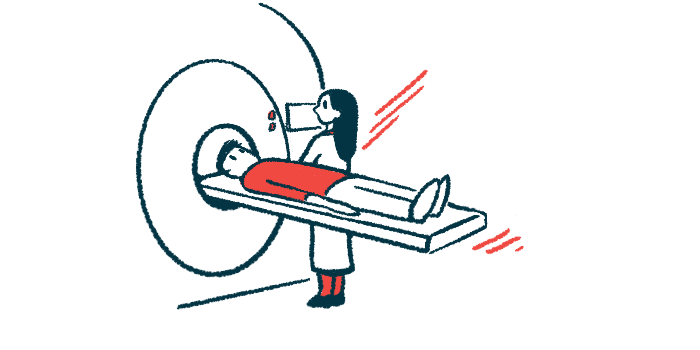Patients With Less Muscle Loss More Likely to Respond to Spinraza: Study
Finding underscores need for early diagnosis, treatment for 'maximum effect'
Written by |

People with spinal muscular atrophy (SMA) types 2 or 3 who start treatment with Spinraza (nusinersen) and show less muscle damage on MRI scans are more likely to see motor function improvements, a new study reports.
The finding “underscores the importance of early diagnosis and treatment to obtain the maximum effect” from treatment in SMA, researchers wrote.
“Muscle impairment in MRI affect variability in treatment response to nusinersen in patients with spinal muscular atrophy type 2 and 3: A retrospective cohort study,” was published in Brain & Development.
Spinraza was the first disease-modifying treatment to win widespread approvals for SMA. It works by boosting levels of the SMN protein whose deficit causes the disease. Spinraza is sold by Biogen, which was not involved in this study.
Although clinical trials have broadly demonstrated Spinraza can slow disease progression, not everyone responds to it the same. More dramatic responses are generally seen in patients with less advanced disease when they start treatment, but it remains unclear what clinical measures can best predict treatment response.
Magnetic resonance imaging (MRI) can help assess the health of muscles by looking at atrophy (wasting) and fat replacement (when muscle is lost, it’s generally replaced with fatty tissue). In this study, scientists in Japan tested whether a muscle MRI of the thigh and pelvis before starting treatment could predict the response to Spinraza.
The analysis included 14 children with SMA types 2 or types 3 who were treated with Spinraza for at least 15 months. To assess treatment response, the researchers looked at scores on the Hammersmith Functional Motor Scale-Expanded (HFMSE), a standard measure of motor function.
Results showed a statistically significant negative correlation between MRI scores upon starting treatment and HFMSE scores after 15 months. In other words, those with less muscle loss visible on a MRI tended to have a more pronounced improvement in motor function after starting Spinraza.
“The intensity of fatty infiltration and atrophy of the muscle evaluated at baseline correlated to the degree of motor functional change after [Spinraza] treatment in patients with SMA types 2 and 3,” the scientists wrote.
Half the 14 patients improved by at least three points on the HFMSE, which is considered a clinically significant difference. MRI scores before treatment were not significantly different when comparing patients who did or did not have a clinically meaningful improvement on HFMSE.
The researchers emphasized that, in a progressive disease such as SMA, even stabilizing HFMSE scores is an improvement compared to what would be expected without treatment. They said future studies with more patients and longer follow-up times would be needed to fully evaluate muscle MRI’s utility as a predictor of treatment response.
The scientists also noted patients with clinically meaningful improvement had significantly less severe scoliosis when they started treatment and scoliosis severity showed a statistically significant association with HFMSE improvement after treatment.
“Findings from our study suggested that the degree of muscle involvement and scoliosis at baseline may affect gross motor function improvement after therapeutic intervention,” they wrote.







